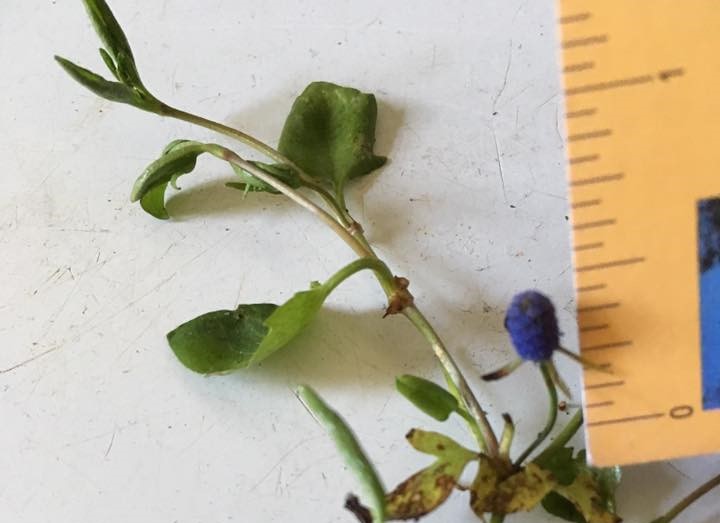Update 6/4/ 2017: I am so happy that the ID "Eryngium prostratum – Creeping Eryngo" was found by Lorel C., and am awarding her the bounty. I also wish that that people could please vote for Christy B.'s answer. She was very close. This plant actually turned out to be in the Eryngium genus, after all! Thank you all so much for your time and research. I appreciate ALL of the answers. Even answers that were off base helped to rule things out, as I added more info and pictures. I don't know why people "downvoted" two answers on my post. That discourages people from trying to help in the future! Please stop doing that. Thanks again, all!
You can see my original post below with the updates, and the four added pictures above the 5th and 6th pics that I had initially posted without size reference (which caused confusion):
"This tiny blue/purple flower is growing in my friend's meadow in the Richmond area of Virginia in the eastern USA. She says it has roots (not corms or bulbs)."
UPDATE: I added more pics below. The leaves that go with the flower are not the three-leaved ones, as she had told me before. I apologize for any confusion this has caused. It definitely has roots (she pulled one up). She said that the leaves were hidden beneath the other leaves. It seems to be low-creeping in habit, and is pretty widespread in this meadow. She also informed me that it mostly grows in the moister areas of the meadow that do not drain as quickly as the rest because they are lower lying. It's growing in full sun, and not near the tree line.
(Photos by Sharon McGeein)
Neither answer below is correct. But, I "liked" them for trying, anyway. Thank you.
Update: Unfortunately, I do not think that the third offered answer is along the right lines, either. (I so wish that it was!) I can't find anything in the Sanguisorba genus (let alone the Rosaceae family) that has similar stems or leaves, at all.
At this point, I think that finding the correct ID may need to be based on the leaves and stems, rather than the miniscule flowers. I don't think that you will find other pictures of these flowers out there on the internet. (I haven't found any after extensive searching.) I doubt that it is a rare plant. It's just that the flowers are so tiny (less than 1/4 inch big) that most people probably would not notice them, or take pictures.













